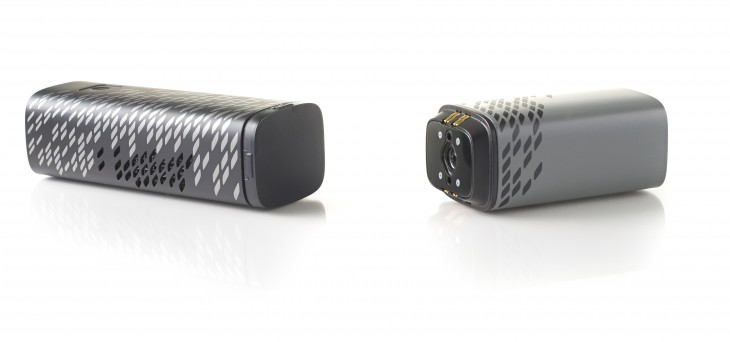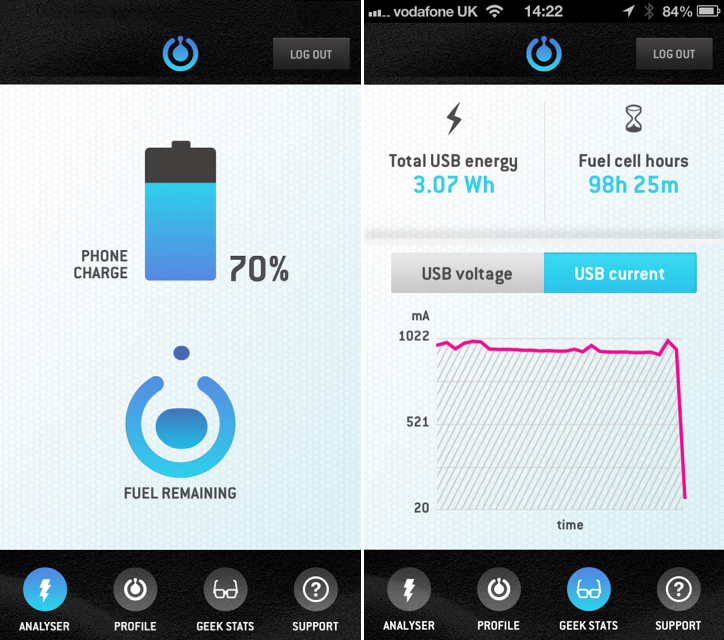
If you own a smartphone or a tablet there’s a pretty good chance that you aren’t very impressed by the battery life; while processing power and storage advances continue apace, battery technology has made only modest gains. But consider yourself lucky that you can simply plug it into the wall and juice up again.
For a number of countries in sub-Saharan Africa that lack the required infrastructure, this simply isn’t the case. However, help may be at hand in the form of the UPP fuel cell charger made by British company Intelligent Energy.
Its CEO, Dr. Henri Winand, explained to TNW why Africa would be the first to get its hands on the UPP, but also why it’s more than just a charger.
The first two billion consumers [in] the world have infrastructure everywhere… when you get to the next two billion you find that there is actually an aspirational and disposable income, but an infrastructure that is not as capable.
Announced today at AfricaCom, the UPP is a PEM fuel cell charger capable of charging a smartphone five to seven times from flat to full. After that, the fuel needs replenishing or the cartridge changing for a new one.
This is a rechargeable fuel cell, like a sponge, when it has given all the fuel out you put some fuel back in. In a very small bottling facility, essentially.
The unit itself is comprised of two separate parts – the ‘engine’ and the ‘fuel’. The two are connected via a strong magnet that keep the pieces tightly locked together.
In order to maximize compatibility, the UPP is fitted with a simple USB input, meaning that anything that can charge off a USB port can charge on an UPP.
If that six or seven full charges doesn’t sound very impressive, that’s because the company doesn’t expect people to use them in this way, although they obviously can be. Winand explained:
Typically people will ‘graze’ so they can use a smartphone for a few weeks. If you have a feature phone you’re well into a month, a month and a half.
On the side of the UPP’s ‘engine’ you’ll find the ‘exhaust’ – specially designed to expel at around vapor at 30 Celsius, just a little below the average body temperature.
While the UPP is by no means the first fuel cell charger on the market, few have an accompanying app. UPP does, though.
With it, you can do things like monitor how much fuel your UPP has left, see where to buy another cartridge and have it delivered to your house. All pretty handy while fuel cells and recharging stations are still a relatively scarce resource.
So what does the engine and the fuel cost? Variable amounts.
Winand explained that as Intelligent Energy’s business model is to sell to big businesses, like telecoms operators, it’s hard to put an exact retail price on the UPP (the company estimates the cost of $199). Whether that includes any fuel cartridges, or indeed multiple cartridges is down to the retailer selling it.
Alternatively, they might just offer it for free – keeping phones running means more money in their pocket.
A platform, not just a charger
Winand said that while it was launching in sub-Saharan Africa in its current form, the UPP was just the first step and would be available globally, and in many different configurations and products.
Now you can separate the energy from the engine… it makes it far more flexible, and it makes it instant – I don’t have to worry about going and finding a plug somewhere.
The way we have designed this product is to think very clearly about how the internals of it can be rearranged very quickly… I won’t comment on when but in the foreseeable future, you can end up having a device that is integrated in a very small form factor, in a portable device. So if you imagine a tablet or something like that and you put your stick of fuel in there and you’re off, away for a week.
However, rather than replacing current battery technology as the primary source of power, Winand used the analogy of it being “an aspirin for the battery that was going from a headache to a migraine”; it would be used to augment battery life to levels far beyond what is seen today. And as it’s a true platform, it can be adapted to suit customers’ (device makers) needs.
Our business model in consumer electronics is always B2B2C. It’s similar to ARM, licensing and mobilising an ecosystem around it, with the engine as the building block. What operators may decide to do with it, or a device manufacturer might decide what to do with it is entirely dependent on those companies, but what [Intelligent Energy]does is support any design iterations and deployment of that building block, in whatever shape or form.
Its current form is the UPP fuel cell charger, which is currently going through the end of its certification process and is due to ship in December. Exactly what form we’ll see it in next, Winand wouldn’t be drawn on, but if it could potentially give our phones or tablets enough charge for a week, we’re keen to find out.
Get the TNW newsletter
Get the most important tech news in your inbox each week.







